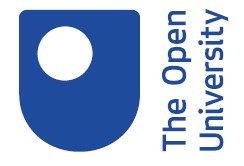A new report from Cranfield University researchers sets out how collaboration will increase automation and autonomy in Air Traffic Management. Distributed Ledger Technologies, similar to blockchain, is set to improve safety, cybersecurity and interoperability
New blockchain-style information sharing will make a seamlessly integrated ecosystem of crewed and uncrewed aircraft in the UK’s skies a reality, say Cranfield researchers.
Uncrewed aerial vehicles and operations are already bringing benefits, such as improving medical logistics for isolated areas, or enabling inspections of difficult to reach infrastructure such as high masts and wind farm turbines. But a transformation of air traffic management (ATM) capacity and systems is needed to open up a new age of commercial opportunities for the aviation sector, as well as drone-enhanced public services: urban air taxis, cargo and delivery services, security operations, healthcare support and environmental monitoring.
According to a PWC and UKRI report in 2021, uncrewed and autonomous aviation will unlock £42 billion for the UK economy by 2030 through cost-savings, productivity gains and new jobs.
A new report — published on 15 June 2022 — sets out how collaboration in the aviation industry can increase much-needed levels of automation and autonomy in ATM, and meet safety standards for uncrewed traffic being set out by the International Civil Aviation Organisation. With this established, elements of a hybrid airspace are predicted to be in place from 2024.
Increasing transparency and trust
The new picture of a working UTM (Uncrewed Aircraft Systems (UAS) Traffic Management) underpinned by blockchain-style technology, has been based on a research partnership between 13 consortium partners, including Cranfield, Heathrow Airport, IAG, NATS, SITA and Oxford University as well as UK-based startups and small-to-medium enterprises.
Progress to the creation of a UTM will be accelerated by the use of a package of technologies that increase levels of transparency and trust, says the report. In particular, Distributed Ledger Technologies (DLTs) — similar to the blockchain technology — can be used to ensure there is secure registration and identification of the different users in the airspace, improving safety and cybersecurity, and interoperability between the stakeholders involved.
A DLT allows thousands of independent computers to share oversight of the history of data (who did what and when). The system includes ‘smart contracts’, controls over user actions backed up by coded security. Artificial Intelligence will enhance cybersecurity measures for the DLTs, allowing for constant real-time data collection, processing and authorisation during operations.
Cross-sector collaboration is vital for hybrid airspace
The Development of an UTM system using cross-cutting technologies: Distributed Ledgers and Artificial Intelligence proposes a new governance framework that sets a series of rules for those stakeholders participating in a distributing ledger, so that they can provide and receive data and services in a trustworthy environment. It also highlights the need for modernisation of ATM to allow for interoperability between UTM and ATM: making ATM and UTM information accessible to all relevant stakeholders.










